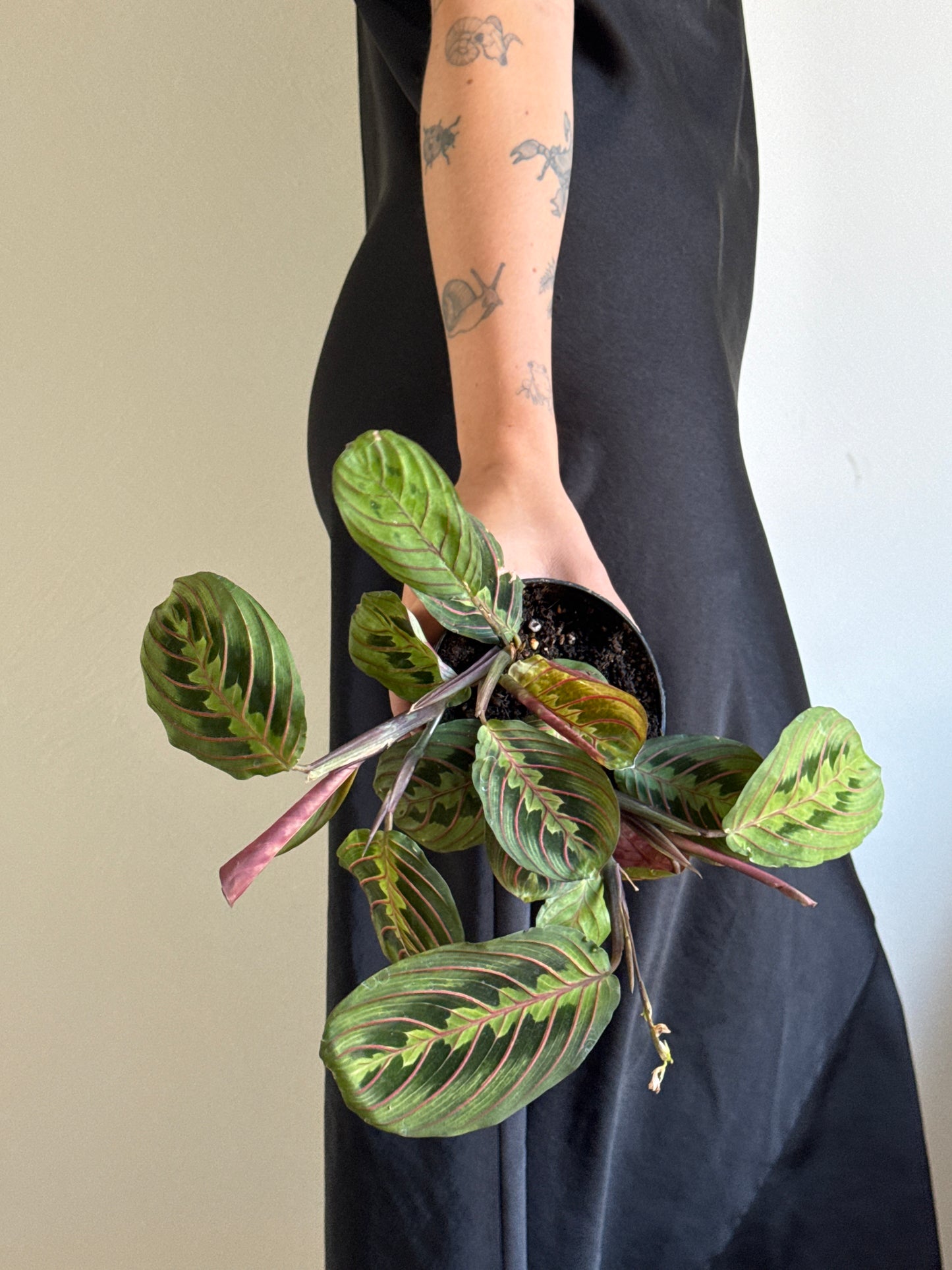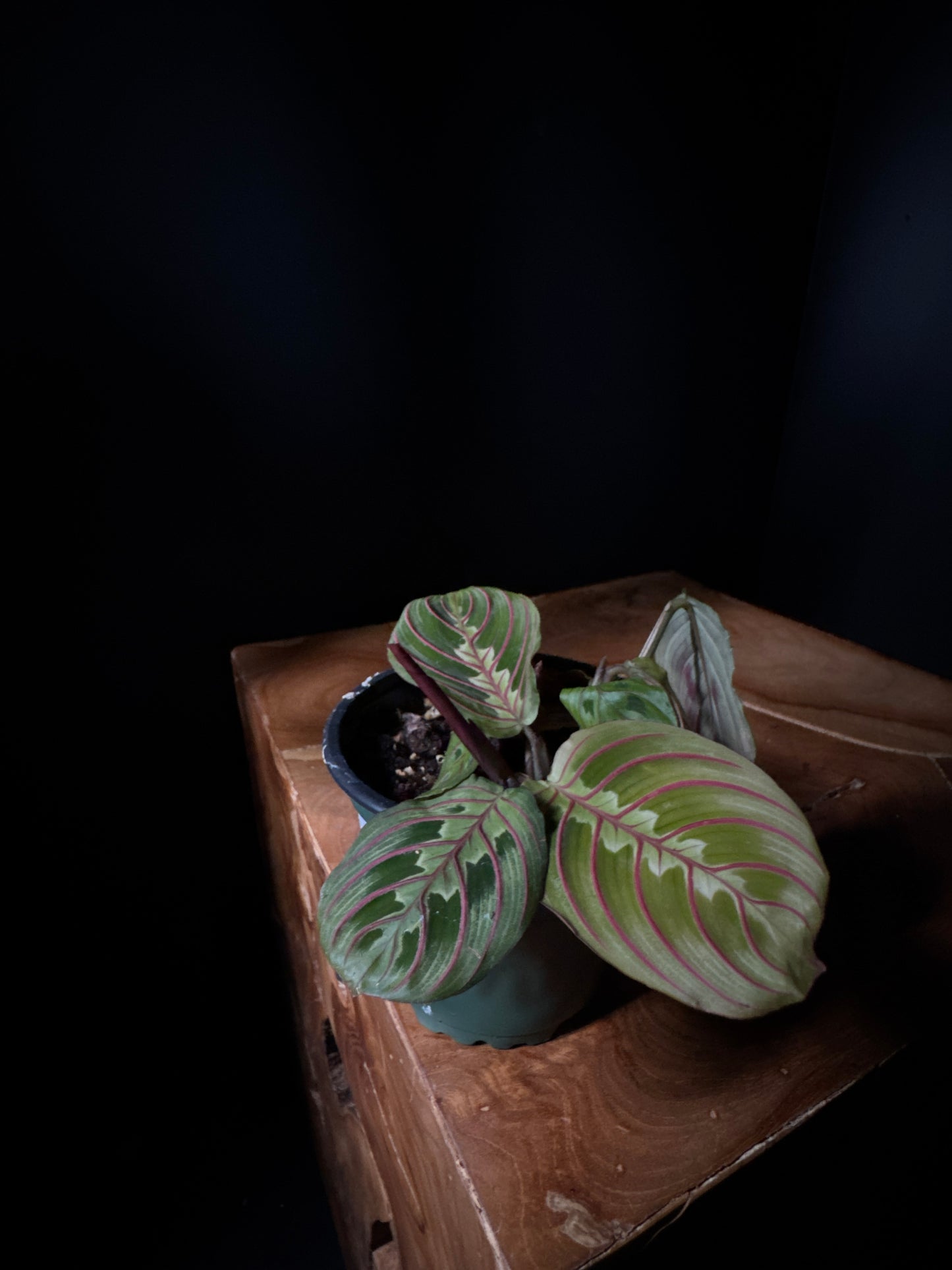1
/
of
2
Maranta Red Prayer Plant (Maranta leuconeura 'Red')
Maranta Red Prayer Plant (Maranta leuconeura 'Red')
Red Prayer Plant (Maranta leuconeura ‘Red’)
The Red Prayer Plant is a tropical favorite admired for its deep green leaves highlighted by vivid red veining and its unique nightly ritual—folding its leaves upright like hands in prayer. Compact and low-growing, it’s perfect for tabletops, plant shelves, or hanging baskets, where its rich color and movement can be fully appreciated.
Pet-safe and humidity-loving, this easy-care plant brings vibrant foliage and tranquil energy to any indoor space, making it a wonderful addition to both modern and cozy interiors.
Sizing Description:
Small: 4" / 10cm pot diameter
Regular price
$12.99
Regular price
Sale price
$12.99
Unit price
/
per
Couldn't load pickup availability
Sun Requirements ▾
Prefers bright, indirect light. It can tolerate low light but will exhibit more vibrant colors and better growth in a brighter location. Avoid direct sunlight, which can scorch the leaves.
Watering Instructions ▾
Keep the soil consistently moist but not soggy. Water when the top inch of soil feels dry. Ensure good drainage to prevent waterlogging, which can lead to root rot.
Humidity: Thrives in high humidity. To increase humidity, use a humidity tray, a room humidifier, or mist the plant regularly. It prefers more humid environments and may struggle in dry air.
Care Tips ▾
Temperature: Enjoys temperatures between 65-80°F (18-27°C). Avoid exposure to temperatures below 50°F (10°C) and protect the plant from cold drafts.
Soil: Use a well-draining, peat-based potting mix. A mix designed for houseplants or one with added perlite and peat moss works well to ensure proper aeration and moisture retention.
Fertilizer: Feed with a balanced, liquid houseplant fertilizer every 4-6 weeks during the growing season (spring and summer). Reduce feeding in fall and winter when growth slows.
Choosing a Pot: Select a pot with drainage holes to prevent water from accumulating at the bottom. A pot that is slightly larger than the plant’s current root ball is ideal to accommodate growth without risking overwatering.
Repotting: Repot every 1-2 years or when the plant becomes root-bound. Choose a pot that provides a bit more space for growth, but avoid using an excessively large pot to prevent potential overwatering issues.
Share







